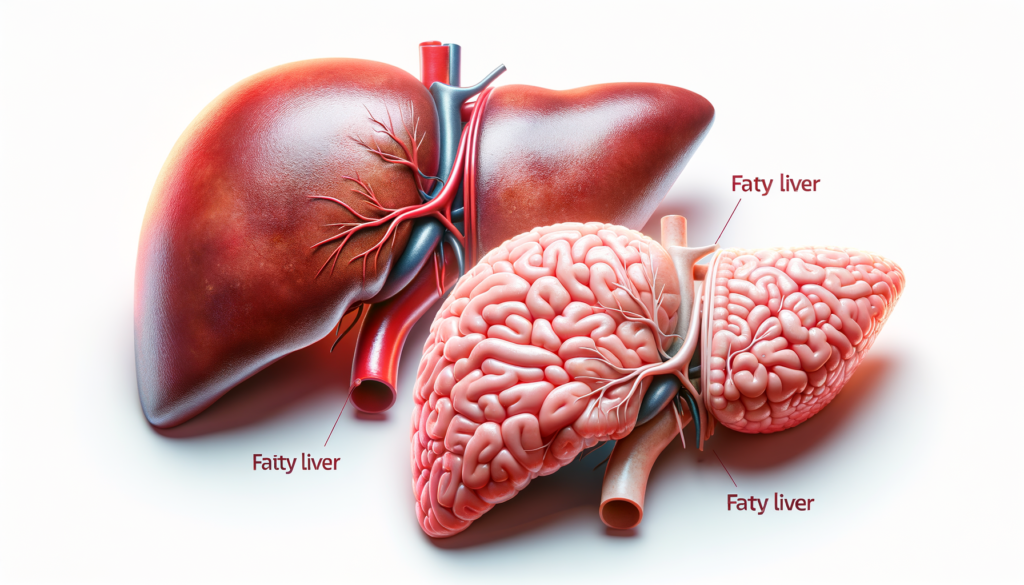The Gaming Blog

Fatty Liver
Understanding Fatty Liver Disease
Fatty liver disease is a condition characterized by the accumulation of fat in liver cells. This condition can be classified into two main types: non-alcoholic fatty liver disease (NAFLD) and alcoholic fatty liver disease (AFLD). NAFLD occurs in individuals who consume little to no alcohol, while AFLD is associated with excessive alcohol consumption. The liver, a vital organ responsible for detoxifying the body, producing proteins, and aiding digestion, can become compromised when excessive fat builds up, leading to inflammation and potential liver damage.
NAFLD is increasingly common and is often linked to obesity, type 2 diabetes, and metabolic syndrome. It is estimated that about 25% of the global population is affected by NAFLD, making it a significant public health concern. AFLD, on the other hand, is primarily associated with long-term alcohol abuse and can lead to more severe liver conditions such as cirrhosis if not managed properly.
Both forms of fatty liver disease can be asymptomatic in the early stages, making regular health check-ups crucial for early detection. Understanding the differences between NAFLD and AFLD is essential for effective management and prevention strategies.
Causes and Risk Factors
The causes of fatty liver disease vary depending on the type. NAFLD is primarily linked to lifestyle factors and metabolic conditions. Key risk factors include:
- Obesity: Excess body fat, particularly around the abdomen, increases the risk.
- Insulin resistance: Common in type 2 diabetes and metabolic syndrome.
- High cholesterol and triglycerides: These contribute to fat buildup in the liver.
Genetic predisposition also plays a role, as some individuals may be more susceptible due to inherited traits. Diet and physical activity levels significantly influence the development of NAFLD, with high-calorie diets and sedentary lifestyles being major contributors.
AFLD is primarily caused by excessive alcohol consumption. The liver metabolizes alcohol, and chronic intake can lead to fat accumulation, inflammation, and liver cell damage. The risk increases with the amount and duration of alcohol consumption.
Understanding these risk factors is crucial for prevention. Lifestyle modifications, such as maintaining a healthy weight, engaging in regular physical activity, and moderating alcohol intake, can significantly reduce the risk of developing fatty liver disease.
Symptoms and Diagnosis
Fatty liver disease often progresses silently, with many individuals unaware of their condition until it becomes more advanced. However, some common symptoms may include:
- Fatigue: A persistent feeling of tiredness or exhaustion.
- Abdominal discomfort: A dull or aching pain in the upper right side of the abdomen.
- Weight loss: Unexplained loss of weight despite a normal diet.
In more severe cases, symptoms such as jaundice (yellowing of the skin and eyes), swelling in the legs and abdomen, and confusion may occur, indicating significant liver damage.
Diagnosis typically involves a combination of medical history, physical examination, and diagnostic tests. Blood tests can reveal elevated liver enzymes, indicating liver inflammation. Imaging tests, such as ultrasound, CT scans, or MRI, can detect fat accumulation in the liver. In some cases, a liver biopsy may be necessary to assess the extent of liver damage and rule out other conditions.
Early diagnosis is vital for effective management and prevention of progression to more severe liver diseases, such as cirrhosis or liver cancer.
Treatment and Management
The management of fatty liver disease focuses on addressing the underlying causes and preventing progression. For NAFLD, lifestyle changes are the cornerstone of treatment. These include:
- Weight loss: Achieving a gradual and sustained weight loss can significantly reduce liver fat.
- Diet: A balanced diet low in saturated fats, refined sugars, and processed foods is recommended.
- Exercise: Regular physical activity helps improve insulin sensitivity and reduce liver fat.
In cases of AFLD, abstaining from alcohol is crucial to halt liver damage. Support from healthcare professionals, counseling, and support groups can aid individuals in achieving sobriety.
Medications may be prescribed to manage associated conditions, such as diabetes or high cholesterol. In severe cases, where liver damage is extensive, liver transplantation may be considered.
Regular monitoring and follow-up with healthcare providers are essential to assess liver function and make necessary adjustments to treatment plans. Patient education and support play a vital role in the successful management of fatty liver disease.
Prevention and Lifestyle Recommendations
Preventing fatty liver disease involves adopting a healthy lifestyle and making informed choices. Key recommendations include:
- Maintain a healthy weight: Aim for a body mass index (BMI) within the normal range.
- Eat a balanced diet: Focus on whole foods, including fruits, vegetables, whole grains, lean proteins, and healthy fats.
- Stay active: Engage in at least 150 minutes of moderate-intensity aerobic exercise per week.
- Limit alcohol intake: If you choose to drink, do so in moderation, adhering to recommended guidelines.
Regular health check-ups and screenings can aid in early detection and intervention. Educating oneself about the risk factors and symptoms of fatty liver disease empowers individuals to take proactive steps in managing their health.
By integrating these lifestyle changes, individuals can significantly reduce their risk of developing fatty liver disease and promote overall liver health.









